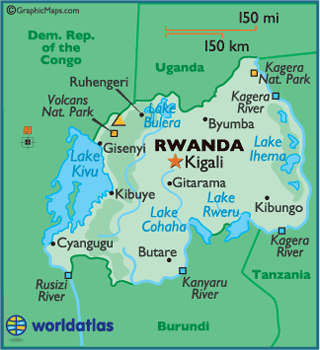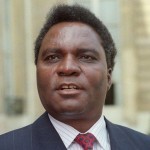“Hutu Extremist” Myth
Why the ICTR Refuses to Examine the Assassination that Triggered the Rwandan Genocide

Violence broke out the following morning, on April 7. The President of the UN Security Council asked the UN Secretary General to collect information regarding the attacks and report it to the Security Council as soon as possible. No news would come until June, when René Dégni, a UN envoy in Rwanda, acknowledged that the shooting of the Dassault Falcon 50 jet had triggered the genocide and requested that a commission be created to examine the issue. Other reports would later attest to his statement and add that the Rwandan Patriotic Front (RPF) was involved in the conspiracy. The UN mysteriously rejected Dégni’s request on the grounds that the organization did not have the necessary budget for such an undertaking.1
Months after the massacre, on November 8, the UN Security Council created the International Criminal Tribunal for Rwanda (ICTR), an international ad hoc tribunal responsible for bringing to justice the individuals charged with organizing the violence committed in Rwanda and its neighboring territories between January 1 1994 and December 31 1994. Although Habyarimana’s death clearly fell within this time period, the ICTR nevertheless went on to declare that any investigation into the event was beyond the tribunal’s mandate. Why did the ICTR make this decision in 1997 and what does it reveal today about international public law?
Upon closer examination, the ICTR carries evidence for Paul Kagame’s complicity in the Habyarimana attacks and in the replacement of a multi-ethnic and power-sharing coalition government with a disruptive and criminal military regime. The evidence undermines the UN’s legitimacy 1) by falsifying its official “Tutsi massacre” thesis, 2) by exposing the role of some Security Council members in facilitating the RPF’s rise to power, and 3) by pointing to the inapplicability of its championed common law and multiparty electoral systems in heterogeneous ethnic settings. This triple threat pushes the UN to preserve its legitimacy by forcing the ICTR not to take into account the evolution of knowledge on the genocide. Therefore, Kagame can claim diplomatic immunity and continue to exercise his hegemonic influence in the Great Lakes region without signing the 1998 Rome Statute so long as the UN remains in its current vulnerable position.
1. THE OFFICIAL NARRATIVE: MYTH OR REALITY?
 Constructing the Official “Hutu Extremist” Narrative
Constructing the Official “Hutu Extremist” NarrativeBack then – and still today – few outsiders understood the lived particularities of Rwanda’s ethnic democracy in the lead up to the genocide (1990-1994).2
Therefore, when Kagame assassinated President Juvenal Habyarimana (pictured right) on the night of April 6 and 7 and Prime Minister Agathe Uwilingiyimana the following morning, a narrative centered on a scapegoat, the Hutu extremist, captured the imagination of almost every outsider who struggled to make sense of the conflict.3
Proponents of the official “Tutsi massacre” narrative argue that a group of ethnic Hutu extremists revengefully assassinated their own president for signing the Arusha peace accords.4 These extremists had a meticulously drawn-out plan to trigger a coup d’état on the night of April 6 and 7, which would in turn allow them to replace their president with an interim government. Yet, even with the United Nations Assistance for Rwanda (UNAMIR) forces by their side, the interim government was unable to control the ensuing violence in Rwanda. Fed up with the government’s inefficiency, Kagame took up arms to protect the Rwandan population and rid the country of genocidal Hutu extremists.5
Proponents of this narrative also describe Habyarimana’s inner circle of relatives and friends, the Akazu, as a group of violent and racist radicals, often intellectuals, with a ‘zero ethnic Tutsi’ policy. This Hutu extremist faction, a cadre of Habyarimana’s MRND party for which democratization meant a likely loss of power, was labelled extremist because it did not refrain from killing moderates. From 1991 to 1992, numerous indiscriminate attacks (with bombs and grenades, among other weapons) were attributed to this faction’s ethnic hating ‘Hutu power’ ideology. As a result, many believed that the Akazu orchestrated Habyarimana’s assassination in 1994.
No hay comentarios:
Publicar un comentario